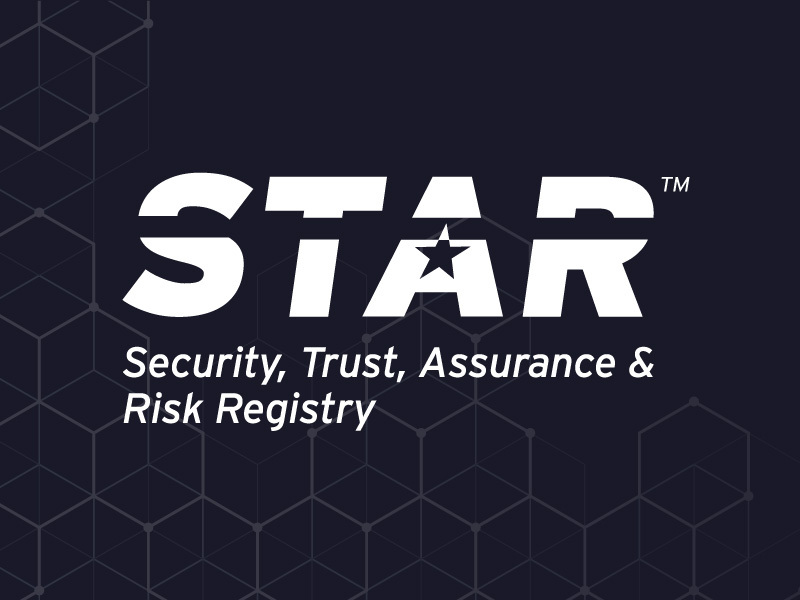Cloud Compliance Frameworks: What You Need to Know
Blog Article Published: 10/21/2021
 This blog was originally published by Hyperproof here.
This blog was originally published by Hyperproof here.
Cloud storage and SaaS solutions bring unprecedented speed, agility, and flexibility to a business. However, trusting third-party vendors with sensitive data comes with numerous inherent risks, such as:
- Insecure access points can increase the likelihood of breaches.
- Cloud services introduce multiple changes to traditional identity and access management (IAM) practices.
- Trusting a vendor with your sensitive data makes you reliant on their security practices.
- Your data becomes more vulnerable to natural disasters, DDoS attacks, and hijacking.
- There is a lack of visibility and control of your data.
Cloud deployments deliver accessibility, but they also create open, decentralized networks with increased vulnerability. This is where cloud compliance frameworks come in. Aligning your data security policies and procedures to cloud compliance frameworks can help you mitigate the risks of deploying third-party cloud infrastructure and SaaS solutions.
Key Components of a Cloud Compliance Framework
Governance
These preset controls protect your sensitive data from dangerous public exposure. Essential areas of cloud governance include:
- Asset management involves organizations taking stock of all cloud services and data contained, then defining all configurations to prevent vulnerability.
- Cloud strategy and architecture includes characterizing cloud structure, ownership, and responsibilities in addition to integrating cloud security.
- Financial controls address a process for authorizing cloud service purchases and balancing cloud usage with cost-efficiency
Change Control
Two of the cloud’s biggest advantages, speed and flexibility, make controlling change more difficult. Inadequate change control often results in problematic misconfigurations in the cloud. Organizations should consider leveraging automation to continuously check cloud configurations for issues and ensure successful change processes.
Identity and access management (IAM) controls often experience multiple changes in the cloud. A few IAM best practices:
- Continuously monitor root accounts, as they can allow dangerous unrestricted access. Disable them if possible or monitor with filters and alarms and require multi-factor authentication (MFA).
- Utilize role-based access and group level privileges, granting access based on business needs and the least privilege principle.
- Disable dormant accounts and institutionalize effective credential and key management policies.
Continuous Monitoring
The complexity and dispersed nature of the cloud make monitoring and logging all activity extremely important. Capturing the who, what, when, where, and how of events keeps organizations audit-ready and is the backbone of compliance verification. When monitoring and logging data in your cloud environment, it’s essential to:
- Remember to enable logging all cloud resources
- Protect logs with encryption and don’t hold in public-facing storage
- Define your metrics and alarms, and record all activity
- Vulnerability Management
Reporting
Reporting provides current and historical proof of compliance. Think of these reports as your compliance footprint and very handy come audit time. A complete timeline of all events before and after an incident can provide critical evidence should your compliance ever be questioned.
Common Cloud Compliance Frameworks
These frameworks speak specifically to cloud compliance requirements. Cloud vendors and customers should be well versed on the specifics of these frameworks.
Cloud Security Alliance Controls Matrix: This foundational grouping of security controls provides a basic guideline for security vendors, boosting the strength of security control environments and simplifying audits. Additionally, this framework helps potential customers appraise the risk posture of prospective cloud vendors.
FedRAMP: Meeting this set of cloud-specific data security regulations is a must for organizations looking to do business with any Federal agency. FedRAMP’s purpose is to ensure all cloud deployments used by the Federal government have the minimum level of required protection for data and applications.
Sarbanes-Oxley (SOX): a set of guidelines governing how publicly-traded companies report financial data to protect customers from errors in reporting or fraud. SOX regulations aren’t security-specific, but a variety of IT security controls are included within the scope of SOX because they support data integrity.
Security-Centric Frameworks
Organizations handling sensitive data can benefit from adhering to the standards set by the following security-specific regulations. These frameworks provide the methodology and structure to help avoid damaging security incidents.
ISO 27001: Developed by the International Organization for Standards, this set of standards for information security management systems demonstrates that your organization operates within the best practices of information security and takes data protection seriously.
NIST Cybersecurity Framework: This foundational policy and procedure standard for private sector organizations appraises their ability to manage and mitigate cyber-attacks. A best practice guide for security pros, this framework assists in understanding and managing risk.
CIS Controls: Created by the Center for Internet Security, this framework delivers actionable defense practices based on a list of 20 Critical Security Controls which focus on tightening access controls, defense system hardening, and continuous monitoring of environments.
Cloud Well-Architected Frameworks
These frameworks can be considered best practice guidelines for cloud architects, commonly addressing operational efficiency, security, and cost-value considerations.
AWS Well-Architected Framework: This guideline helps Amazon Web Services architects design workloads and applications in the Amazon cloud. This framework operates around a set of questions for the critique of cloud environments and provides customers with a solid resource for architecture evaluation. Five key principles guide Amazon architects—operational excellence, security, reliability, performance efficiency, and cost optimization.
Google Cloud Architected Framework: This guideline provides a foundation for constructing and enhancing Google cloud offerings. This framework guides architects by focusing on four key principles—operational excellence, security and compliance, reliability, and performance cost optimization.
Azure Architecture Framework: This set of guidelines assists architects constructing cloud-based offerings in Microsoft Azure. This guide helps maximize architecture workloads.
Author:
Jingcong Zhao JC is responsible for driving Hyperproof's content marketing strategy and activities. She loves helping tech companies earn more business through clear communications and compelling stories. JC spent the past several years in communications, content strategy, and demand generation roles in market-leading software companies such as PayScale and Tableau. She is originally from Harbin, China.
Related Articles:
How to Set Your Small Privacy Team Up for Success
Published: 04/17/2024
How to Audit Your Outdated Security Processes
Published: 04/16/2024
Cloud Relationships: Getting to Grips With the ‘Vendor of My Vendor’
Published: 04/15/2024
Evaluate the Security of Your Cloud Service Provider with the CSA STAR Registry
Published: 04/13/2024









